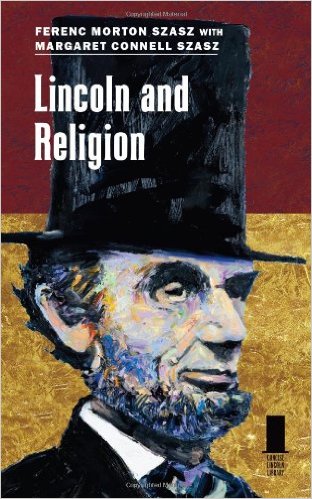Since 2018, the Vicksburg campaign bibliography has grown considerably. In addition to Donald L. Miller’s gripping narrative history, the inexhaustible Timothy B. Smith has produced important studies of Grierson’s Mississippi raid, Grant’s leadership and decision making, and the initial federal assaults. The no less prolific Earl J. Hess will release his account of the fighting from May 19-22, 1863 later this year. To this surge of recent scholarship editors Steven E. Woodworth and Charles D. Grear add Vicksburg Besieged, the latest entry in Southern Illinois University Press’s Civil War Campaigns in the West series. In eight, sprite essays, the contributors explore the forty-seven-day long siege from some oblique angles.
Andrew Bledsoe opens the volume with a welcome reassessment of Grant’s staff during the siege. In a portent of his presidency, “personal loyalty and friendships mattered to Grant,” which prompted the general to countenance “inferior staffers” longer than he should have (20-21). Still, despite much ineptitude and inexperience, Grant’s staff “demonstrated flashes of proficiency.” In particular, Lieutenant Colonel John A. Rawlins proved a steady and reliable hand, even wresting from Grant a temperance pledge. But Bledsoe concludes that the federal triumph at Vicksburg owed much to Grant’s own “skill, adaptability, and determination” (23).
African American troops contributed no less significantly to Union victory, though chroniclers of the Vicksburg campaign have too often neglected their efforts. In their essay, Scott L. Stabler and Martin J. Hershock recount the determination with which regiments of United States Colored Troops held key federal positions in northeastern Louisiana. In sanguinary fights at Miliken’s Bend and Lake Providence, African American soldiers not only helped Grant to maintain his grip on Vicksburg, but “affirmed their own claim to equality and swayed Northern popular opinion about their abilities” (29)
While Stabler and Hershock seek to remedy the inattention paid African American soldiers, Jonathan M. Steplyk aims to provide a fuller accounting of the role sharpshooters played during the siege. The regular crack of the sharpshooter’s musket dominated the Vicksburg soundscape. Short on ammunition, Pemberton’s marksmen did their best to keep the “besiegers at bay,” while their blue-coated counterparts supplied essential covering fire during the excavation of mines, tunnels, and trenches. “More than simply random killing,” Steplyk writes, federal sharpshooting facilitated siege craft and depleted rebel morale (65). Sharpshooting may not have been random, but the siege assumed an unpredictable character at night. As Steven E. Woodworth demonstrates in his short but compelling essay, “the nocturnal interludes of the Vicksburg siege were the most fluid and dynamic part” of the operations (69). “Nights on the Vicksburg lines,” Woodworth writes, “were a strange mix of war and peace,” concealing work on tunnels and trenches while supplying opportunities for fraternization in no-man’s-land (70). Though not framed as a sensory history, Woodworth’s essay makes evident that the siege is a ready-made canvas for historians of perception, feeling, and experience.
Building from his Engineering Victory: The Union Siege of Vicksburg [2015], historian Justin Solonick marvels at the unlikely “blend of West Point engineering siege theory” and “Midwestern common soldier improvisation and adaption” that resulted in the detonation of two mines beneath the rebel lines (80). “Nineteenth-century military mining,” Solonick reminds, “was a science rooted in assumption” (89). Overseeing the process at Vicksburg was the Ohioan Andrew Hickenlooper, a “self-taught military engineer” who literally worked himself to exhaustion (104).
Next, John J. Gaines studies the ordeal of the siege for Vicksburg’s civilian population, though his essay has curiously little to say about the experiences of African Americans. He notes that “many of the resourceful residents of Vicksburg endeavored to secure themselves in a multitude of hand-dug caves,” though these subterranean shelters were often excavated by enslaved persons (117). The essay remarks upon the conspicuous defiance of Emma Balfour, who remained a committed Confederate nationalist amid her trying circumstances, but concludes that many of her neighbors embraced a more “pragmatic” approach to life under siege. Gaines suggests that the “perceived bitterness of the residents of Vicksburg following surrender” has been overstated, though this is a conclusion that demands fuller treatment (128).
The pragmatism exhibited by so many Vicksburg civilians was also on display among the soldiers of the Army of Relief—and among those Confederate soldiers hailing from the trans-Mississippi west. Richard H. Holloway recalls a surreal episode during the federal attack on Fort Breckinridge, when a piano hauled from a nearby plantation to the Confederate breastworks supplied a musical accompaniment to the din of battle, while Charles D. Grear argues that after the fall of Vicksburg, fearing urgently anew for the safety of their homes and families, “Trans-Mississippians began to reprioritize their motivation to fight for the Confederate cause” (148). Grear’s essay suggests that these rebel soldiers immediately felt and apprehended the significance of Vicksburg’s fall.
Drawing on many decades of study, the contributors to Vicksburg Besieged supply welcome new perspectives on a pivotal moment in Civil War history. While these well-written essays will appeal chiefly to students of the war’s military history, historians of the environment, health, food, and the senses will discover much fodder for their future work.
Brian Matthew Jordan, a finalist for the Pulitzer Prize, is the author of A Thousand May Fall: Life, Death, and Survival in the Union Army (2021).





